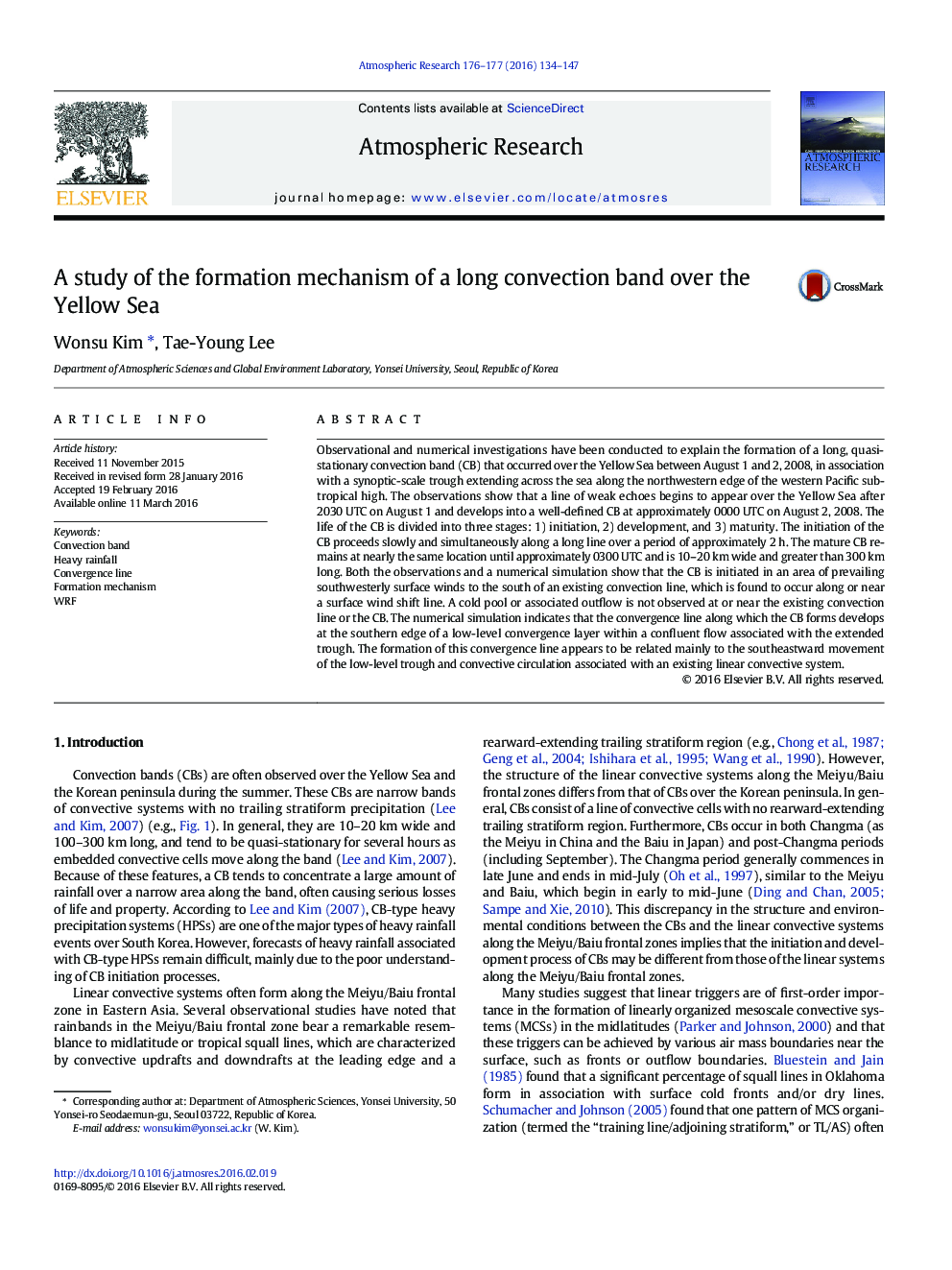| Article ID | Journal | Published Year | Pages | File Type |
|---|---|---|---|---|
| 6342942 | Atmospheric Research | 2016 | 14 Pages |
Abstract
Observational and numerical investigations have been conducted to explain the formation of a long, quasi-stationary convection band (CB) that occurred over the Yellow Sea between August 1 and 2, 2008, in association with a synoptic-scale trough extending across the sea along the northwestern edge of the western Pacific subtropical high. The observations show that a line of weak echoes begins to appear over the Yellow Sea after 2030 UTC on August 1 and develops into a well-defined CB at approximately 0000 UTC on August 2, 2008. The life of the CB is divided into three stages: 1) initiation, 2) development, and 3) maturity. The initiation of the CB proceeds slowly and simultaneously along a long line over a period of approximately 2Â h. The mature CB remains at nearly the same location until approximately 0300 UTC and is 10-20Â km wide and greater than 300Â km long. Both the observations and a numerical simulation show that the CB is initiated in an area of prevailing southwesterly surface winds to the south of an existing convection line, which is found to occur along or near a surface wind shift line. A cold pool or associated outflow is not observed at or near the existing convection line or the CB. The numerical simulation indicates that the convergence line along which the CB forms develops at the southern edge of a low-level convergence layer within a confluent flow associated with the extended trough. The formation of this convergence line appears to be related mainly to the southeastward movement of the low-level trough and convective circulation associated with an existing linear convective system.
Keywords
Related Topics
Physical Sciences and Engineering
Earth and Planetary Sciences
Atmospheric Science
Authors
Wonsu Kim, Tae-Young Lee,
